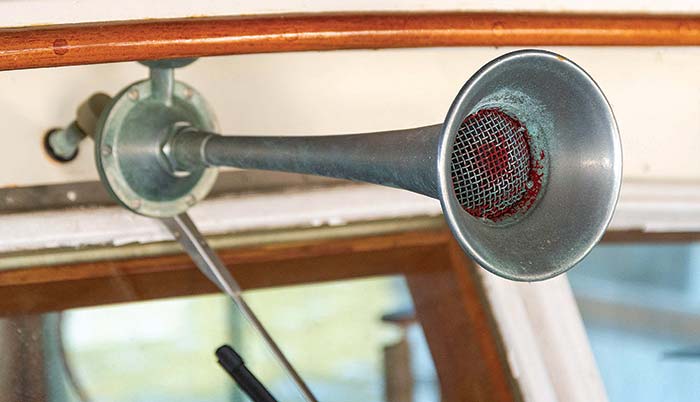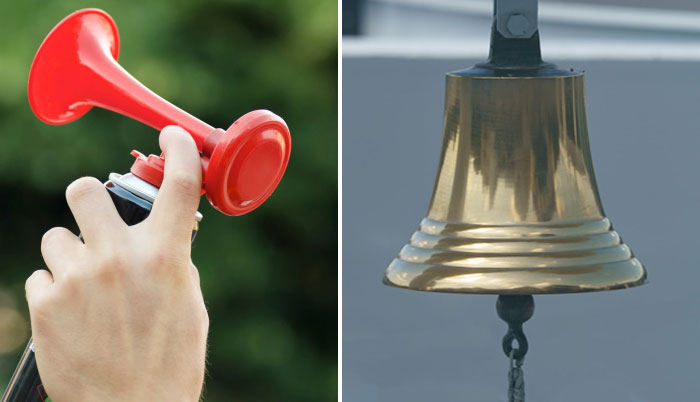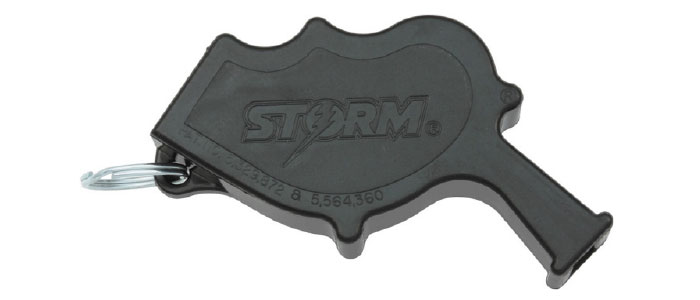Advertisement
When caught in a situation with restricted visibility, you'll need know how to let others know where you're located — and interpret where they are.

Photo: Stacey Nedrow-Wigmore
While the term "restricted visibility" may sound like there's something in your path that obstructs or blocks the view of where you're going, in maritime terms, it describes not only a situation where an operator can't see hazards in their path and around them, but also one that prevents your boat from being seen by others. Two common examples of this would be operating a vessel at night or during inclement weather. But restricted visibility can also occur due to unusual circumstances, such as dust storms or even smoke from nearby forest fires.
Boats need to be aware of each other's position at all times to operate safely, which is why adherence to navigational rules (such as the proper display of lights and use of sound signals) during periods of restricted visibility is so crucial.
Similar to the visual information provided by navigational lighting, sound signals provide an audible means of conveying your intentions, while also helping you understand what other boats around you are doing. This is especially important in situations of restricted visibility, such as fog, heavy rain, or when transiting areas where a vessel operator may experience limited visibility due to physical characteristics (a sharp bend in a narrow river, for example). In situations like these the effectiveness of navigation lights may be reduced or eliminated altogether.
Inland Vs. International
In some cases, the sound signals for International Rules may differ slightly from those described in the Inland Rules (the focus of this article). If traveling overseas, be sure to consult and familiarize yourself with the International Rules beforehand as provided in the Navigation Rules. While every boat owner should have sound-signal information on board for quick reference, a printed copy of the Navigation Rules is mandatory for vessels over 12 meters (39.4 feet) in length.
Sound-Producing Devices And Characteristics
Sound signals are described as "blasts," of which there are two types: A "short blast" means a blast of about 1 second, while a "prolonged blast" is 4 to 6 seconds.
The word "whistle" is defined in the Navigation Rules as any sound-signaling device capable of producing the required blasts as described by Annex III of the Rules. While Annex III provides the technical details of what constitutes a proper blast (such as frequencies and intensity) a simple interpretation for most recreational boaters would be how far the blast can be heard. For example, the minimum audibility range for a whistle or horn (both can be used interchangeably) required for a vessel 20 meters (65.6 feet), but less than 75 meters (246 feet) in length is 1 nautical mile. The minimum range for a vessel 12 meters (39.4 feet), but less than 20 meters is .5 nautical miles.
Advertisement
Most every vessel is required to carry some form of sound-producing device, and even those that are not would do well to have one on board, regardless of mandated carriage requirements.
That said, the Navigation Rules state a vessel 12 meters or more in length shall be provided with a whistle and a bell. Vessels of 100 meters or more in length shall additionally carry a gong, the tone and sound of which cannot be confused with that of the bell. The bell and gong may be replaced by equipment having the same respective sound characteristics, provided that manual sounding of the prescribed signals is always possible. An example of this would be an electronic loud hailer system that can generate the required sounds.


Acceptable sound-producing devices on board a boat can include an air horn, bell, or whistle, depending on the boat. (Photos: Air horn: Getty Images/gabrieletamborrelli; Bell: Getty Images/Yury Karamanenko)
Vessels less than 12 meters in length are required only to carry an "efficient" sound-producing device, such as a bell, air horn, or whistle. While banging on that galley pot may technically qualify as meeting the letter of the law, do yourself (and everyone else) a favor and carry an appropriate a sound-producing device. As the goal here is to be heard, ditch that wimpy horn and get one that makes the other boats think the Queen Mary is headed their way!
Sound Signals During Restricted Visibility
The below summary focuses on sound signals applicable for recreational vessels during restricted visibility. Keep in mind, however, that vessels engaged in other activities (towing, for example) will often have different or additional sound signal requirements and that sometimes variations may apply. When in doubt, always refer to the Navigation Rules.
- Power vessels making way through the water must sound one prolonged blast at not more than 2 minute intervals.
- A power vessel underway but stopped (not making way) must sound two prolonged blasts roughly 2 seconds apart at intervals of not more than 2 minutes.
- A sailing vessel, a vessel not under command, a vessel restricted in her ability to maneuver (whether underway or at anchor), or a vessel engaged in fishing (underway or at anchor) must sound three blasts in succession (one prolonged followed by two short blasts) at intervals of not more than 2 minutes.
- A vessel at anchor must ring a bell rapidly for about 5 seconds at intervals of not more than 1 minute apart. For vessels 100 meters or more in length (which require both a bell and gong), the bell shall be sounded in the forepart of the vessel and immediately after the ringing of the bell, the gong shall be sounded rapidly for about 5 seconds in the after part of the vessel. A vessel at anchor may, in addition, sound three blasts in succession; namely, one short, one prolonged and one short blast, to give warning of her position and of the possibility of collision to an approaching vessel. When anchored in a special anchorage area designated by the Secretary, vessels less than 20 meters in length, barges, canal boats, scows, or other nondescript craft are not required to give the sound signals described above for anchored vessels.
While vessels less than 12 meters in length are not required to give the above signals, they are required to make some type of efficient sound signal at intervals not more than 2 minutes apart. While there is leeway regarding sound signals for vessels less than 12 meters, why try to reinvent the wheel here? Having a proper sound-signaling device on smaller vessels and using the same sound signals (where practical and permitted by the rules) are a win-win for everyone on the water, in my opinion.
Finally, a vessel nearing a bend or an area of a channel or fairway where other vessels may be obscured by an intervening obstruction must sound one prolonged blast. This signal must be answered with a prolonged blast by any approaching vessel that may be within hearing around the bend or behind the intervening obstruction.
Remember these sound signal rules (we recommend carrying a cheat sheet on board), and you can cruise with the confidence of having added to your boating safety skill set.
